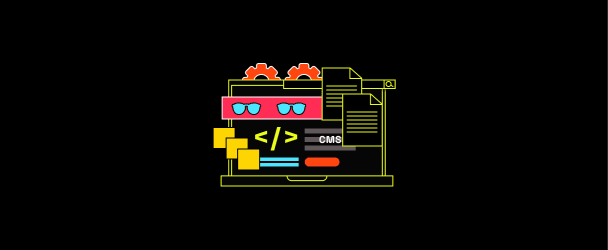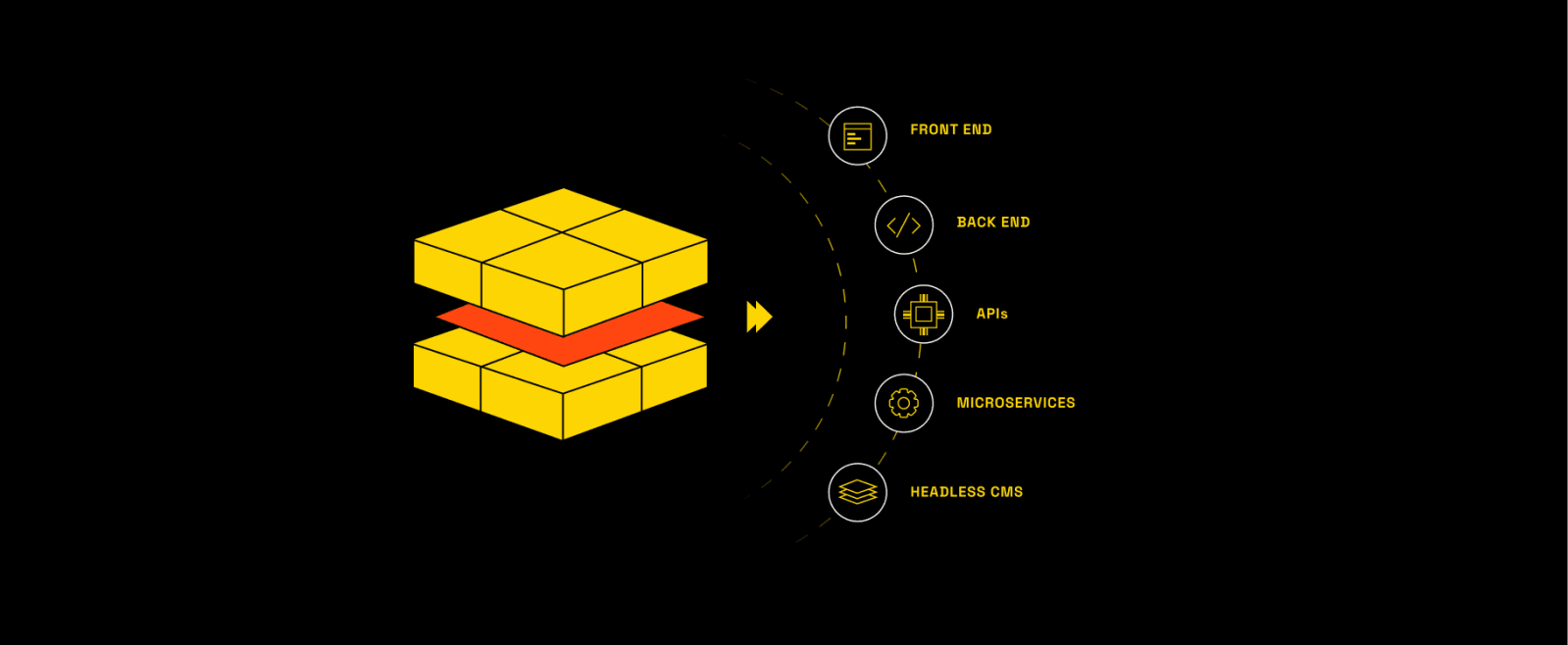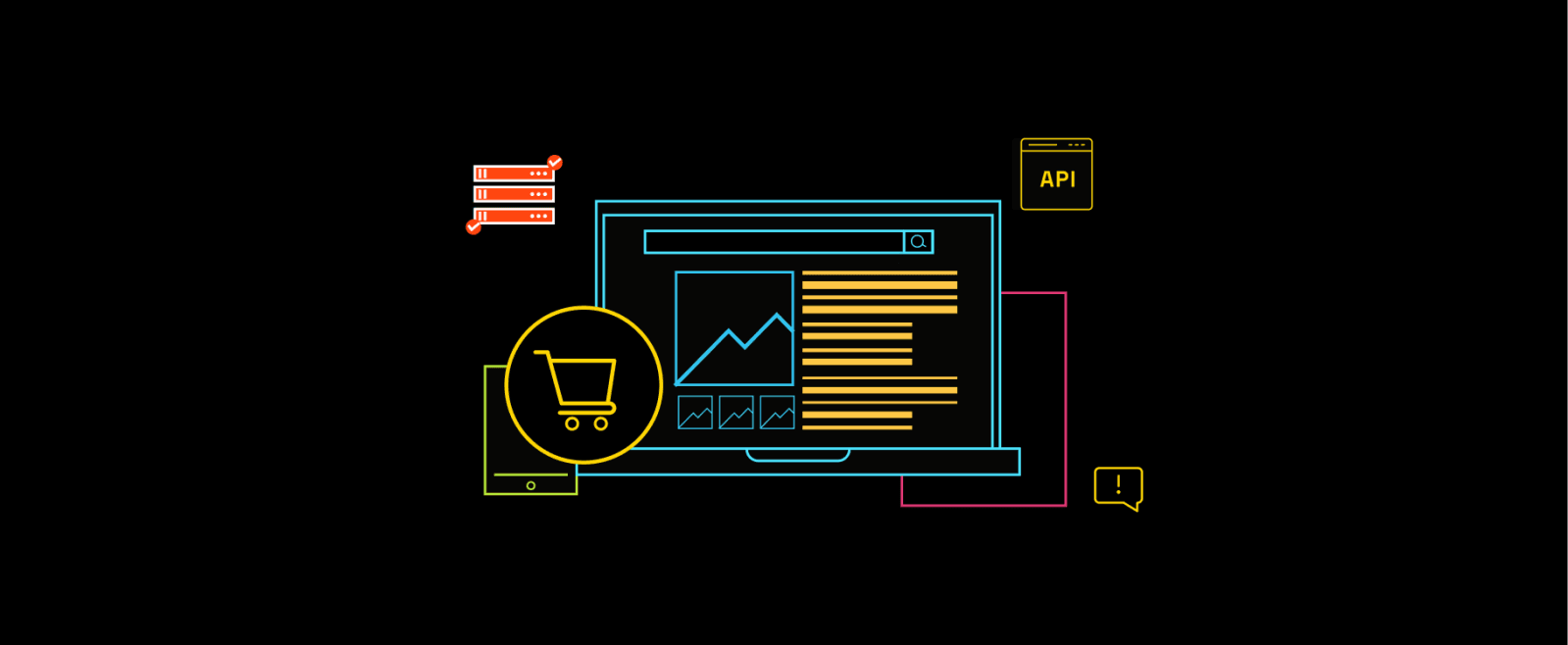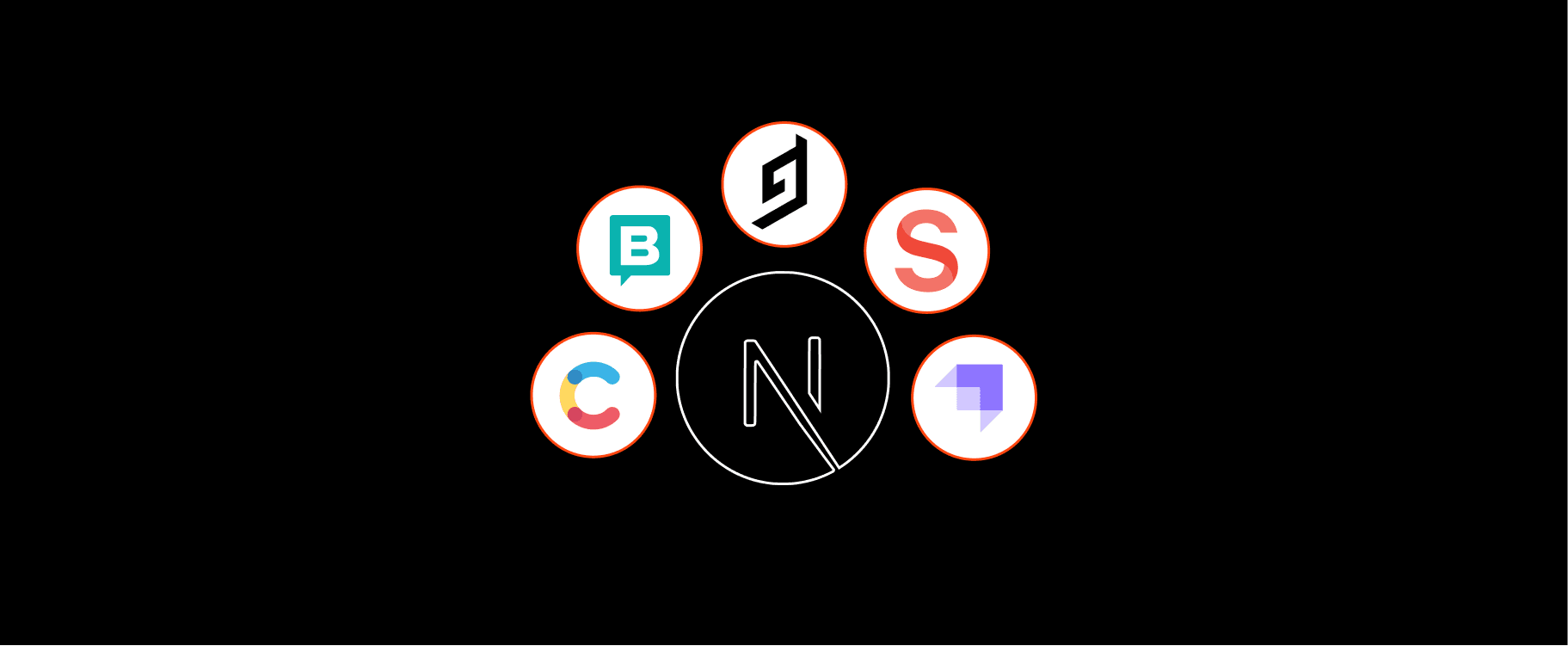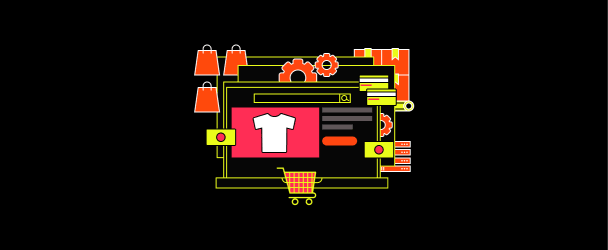Traditional vs. Headless CMS: The Definitive 2024 Guide for Content Marketers
As we navigate the ever-evolving digital landscape, businesses must adapt and innovate to stay competitive. An effective content management system (CMS) is a crucial component in achieving this success. This article will delve into the captivating CMS realm, contrasting the time-tested traditional vs. headless CMS.
By the end of your journey, you'll be well-versed in the CMS landscape and empowered to make strategic decisions that will elevate your business in our increasingly connected world.
What is a Content Management System (CMS)?
A Content Management System, or CMS, is a software application that allows users to create, manage, and modify digital content on a website without requiring extensive technical knowledge or coding skills. These platforms differ in terms of features and capabilities. At very basic levels, a CMS must-have features that allow it to set different roles and assign permissions, content scheduling, and custom workflow setups.
Early CMS platforms, such as Microsoft FrontPage and Adobe Dreamweaver, revolutionized how users could create and edit web content. These tools provided a visual interface for designing web pages, eliminating the need for manual HTML coding. However, they still required some technical know-how and had limitations regarding functionality and scalability.
As the internet continued to grow, more advanced CMS platforms emerged. Some earlier known examples include WordPress, Joomla, and Drupal. These open-source platforms offered greater flexibility, allowing users to create and manage content with ease while also providing a wealth of plugins and themes to customize the appearance and functionality of a website.
Over time, the demand for more sophisticated content management solutions led to the development of new CMS architectures, such as the headless CMS. This modern approach to content management decouples the front-end presentation layer from the back-end content repository, enabling greater flexibility, scalability, and integration with other technologies.
What is a Traditional CMS?
A traditional CMS, also known as a coupled or monolithic CMS, tightly integrates a website's front-end and back-end layers. This approach simplifies the process of managing both content and presentation in a single system. However, it also imposes certain limitations in terms of flexibility and adaptability to modern web technologies.
Here's a step-by-step breakdown of how a traditional CMS works:
-
Content Creation: Users create and edit content within the CMS's built-in WYSIWYG (What You See Is What You Get) editor that comes with a simple interface or other content editing tools.
-
Content Storage: The CMS stores the content in a database, usually in a structured format like SQL.
-
Template Selection: Users choose a pre-built template or design a custom one to determine the look and feel of the website.
-
Content Rendering: The CMS processes the content, combining it with the chosen template to generate HTML, CSS, and JavaScript for the front-end presentation.
-
Content Delivery: The generated HTML, CSS, and JavaScript files are served to the end-users web browsers, rendering the website as intended.

The traditional CMS has been a popular choice for managing websites due to its all-in-one approach and ease of use.
Tightly coupling the content and presentation layers allows users to create and manage a website's content and appearance within a single platform.
However, this approach has limitations, particularly regarding flexibility, scalability, and integration with modern web technologies. The following section will explore the headless CMS approach and how it addresses these challenges.
Traditional CMS Features and Main Benefits
A traditional CMS has been the go-to choice for many businesses and individuals due to its comprehensive feature set and ease of use. By understanding these aspects, you can better determine if a traditional CMS suits your business needs.
Features of Traditional CMS:
- User-friendly Interface: Traditional CMS platforms typically offer an intuitive, easy-to-use interface that allows users to create, edit, and manage content without extensive technical knowledge.
- WYSIWYG Editor: A built-in WYSIWYG (What You See Is What You Get) editor enables users to edit content directly on the page, streamlining the content creation process and providing an accurate preview of how the content will appear on the website.
- Pre-built Templates: Traditional CMS platforms often come with a library of pre-built templates that users can choose from, simplifying the process of designing a website and giving it a professional appearance.
- Customization Options: Many traditional CMS platforms offer customization options, such as themes and plugins, allowing users to tailor the look and functionality of their websites to suit their needs.
- SEO Tools: Traditional CMS platforms often include built-in SEO tools to help users optimize their websites for search engines, improving visibility and driving organic traffic.
Main Benefits of Traditional CMS:
- Ease of Use: Traditional CMS platforms are designed to be user-friendly, making it easy for users with limited technical skills to create and manage websites.
- Streamlined Content Management: With an integrated content management system, users can efficiently manage their content, templates, and media assets in one place.
- Cost-Effective: Many traditional CMS platforms are open source, meaning users can access them for free, while premium options are available for those who require additional features and support.
- Community Support: Traditional CMS platforms often have large, active communities of users and developers, offering extensive resources, tutorials, and support forums to help users troubleshoot issues and improve their websites.
- Rapid Deployment: A traditional CMS allows for quick website setup and deployment, enabling users to launch their websites with minimal delay.
What is a Headless CMS?
A headless CMS is a modern content management approach that decouples the content repository (back-end) from the presentation layer (front-end). This separation allows for greater flexibility, scalability, and the ability to deliver content seamlessly across various channels and platforms.
The term "headless" stems from the absence of a fixed front-end, enabling developers to build custom front-end experiences using their preferred frameworks, libraries, or technologies.
What are Headless CMS features and Main Benefits?
Now that we've established how headless CMS differs from traditional CMS options, we'll delve into the unique aspects of a headless CMS and discuss the advantages that make it an attractive solution for modern content management needs.
Features of Headless CMS:
- Decoupled Architecture: A headless CMS features a decoupled architecture that separates content management from the presentation layer, providing greater flexibility and adaptability.
- Content API: The Content API allows developers to interact directly & retrieve content from the headless CMS in a standardized, easily consumable format (typically JSON), which they can then use in their applications. It is how content is exchanged between the CMS and the various platforms or channels.
- Platform Agnostic: A headless CMS does not impose any constraints on the type of device or platform that can receive and display the content. Because the content is managed and stored independently from its presentation layer, developers can build front-end applications for any platform or device without any restrictions from the CMS.
- Front-end Flexibility: Developers can choose their preferred front-end technologies and frameworks, such as React, Angular, or Vue.js, offering greater control over the user experience.
- Scalability: Built for scalability, a headless CMS can quickly grow and adapt to accommodate new platforms or channels as needed without compromising content delivery or performance.
Here's a step-by-step breakdown of how a traditional CMS works:
- Content Creation: Users create content using built-in editing tools, markdown, or text-based editors. The emphasis is on creating structured content with defined fields and data types to make it more usable across platforms. Since the presentation layer is managed separately, the content is more effective in serving the needs of diverse platforms & channels.
- Content Storage: The headless CMS stores content in a structured database, usually JSON or XML, making it easily accessible through APIs.
- API Configuration: Developers configure APIs to access and retrieve content from the CMS's content repository. These APIs are used to deliver content to various platforms and channels.
- Front-end Development: Developers build the front-end user experience using their preferred technologies and frameworks, such as React, Angular, or Vue.js.
- Content Delivery: The headless CMS uses its API to deliver content from the content repository to the front-end application or other platforms, ensuring consistent content presentation across multiple channels.

Main Benefits of Headless CMS:
- Greater Flexibility: Developers have more freedom with a headless CMS since they can create unique front-end experiences and use their favorite technologies and frameworks.
- Multi-Channel Content Delivery: The platform-agnostic nature of a headless CMS ensures content is consistent and easily accessible across various platforms and devices, supporting multi-channel content strategies.
- Improved Performance: By decoupling the content repository from the presentation layer, a headless CMS can often deliver content more quickly and efficiently, improving overall website performance and user experience.
- Future-Proofing: A headless CMS is better equipped to adapt to new technologies and industry trends, ensuring your digital presence remains relevant and up-to-date in an ever-evolving landscape.
- Easier Integrations: A headless CMS typically uses APIs to connect with other systems and tools, simplifying integrating with existing infrastructure or implementing new solutions.
Traditional Vs. Headless CMS
| Feature | Traditional CMS | Headless CMS |
|---|---|---|
| Content Management | Backend and Frontend are tightly coupled | Backend and Frontend are decoupled |
| Flexibility | Limited by platform capabilities | Greater flexibility with custom frontend |
| Development Time | Slower due to platform constraints | Faster with modern development tools |
| Scalability | Potentially limited by architecture | Highly scalable with API-based content delivery |
| Omnichannel Support | Limited to built-in channels | Supports multiple channels via API |
This table highlights key differences in content management, flexibility, development time, scalability, and omnichannel support. By examining these distinctions, you can understand the advantages and limitations of each system, helping you make an informed decision when choosing a CMS for your specific needs.
Conclusion
In today's rapidly evolving digital landscape, businesses need a CMS that offers flexibility, scalability, and the ability to adapt to ever-changing consumer demands. While traditional CMS platforms have served their purpose well in the past, headless CMS has emerged as a more suitable choice for modern businesses.
Headless CMS provides several advantages over traditional CMS:
- Flexibility: Headless CMS allows developers to use their preferred front-end frameworks and technologies, making creating custom, cutting-edge user experiences easier.
- Omnichannel support: With its API-based architecture, headless CMS can seamlessly deliver content across multiple channels, including websites, mobile apps, IoT devices, and more, ensuring a consistent brand experience.
- Scalability: Headless CMS is more easily scalable, thanks to its decoupled architecture and cloud-based infrastructure. This enables businesses to grow and adapt without being held back by the limitations of a monolithic platform.
- Faster development: Since developers can work independently on the front-end and back-end, development cycles can be shortened, and updates can be made more quickly, allowing businesses to stay ahead of their competition.
- Future-proof: With a headless CMS, businesses can use new technologies and platforms as they emerge, ensuring their digital presence remains cutting-edge and relevant.
Considering these advantages, a headless CMS is the better choice for businesses. Its flexibility, omnichannel support, scalability, faster development, and future-proof nature make it an ideal choice for companies looking to stay competitive and adapt to the ever-changing digital landscape.
By adopting a headless CMS, businesses can ensure that their content strategy remains agile, efficient, and capable of meeting the demands of today's tech-savvy consumers.
